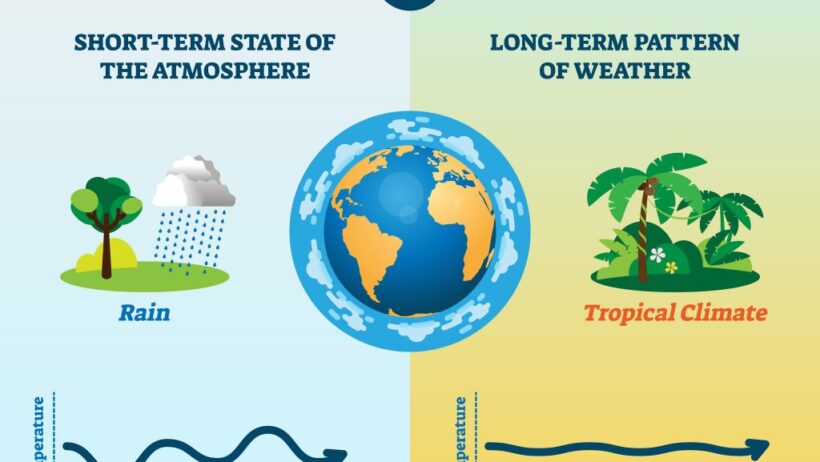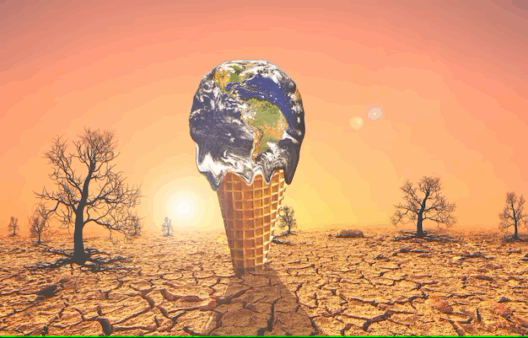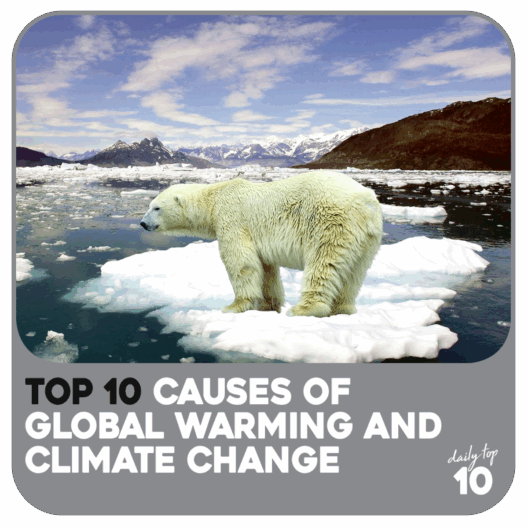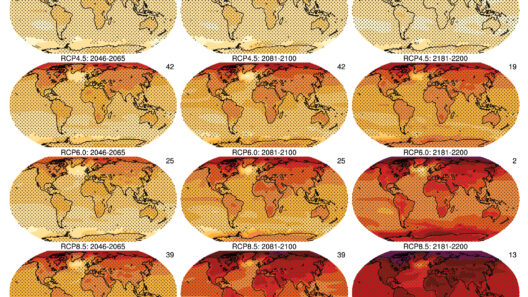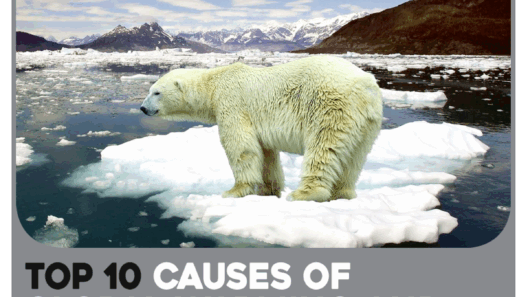Weather and climate—two terms frequently conflated, yet overwhelmingly different in essence and implication. Understanding their distinctions is not merely academic; it carries profound implications for how we perceive and respond to the environmental changes around us. The complexity of these concepts can shape our policies, predict our fortunes, and challenge our resilience against nature’s unpredictable whims.
At its core, weather refers to the short-term atmospheric conditions in a specific place at a specific time. It encompasses phenomena such as temperature, humidity, precipitation, and wind speed—elements that can tenuously fluctuate from minute to minute, hour to hour, or day to day. Think of a spring day that starts with a glorious sunrise, only to transform into a torrential downpour by noon. This ephemeral nature of weather is what makes it so intricate and variable, characterized by spontaneity and fluctuation.
Conversely, climate exhibits a broader and more stable picture. It represents the long-term patterns and averages of weather over extended periods—typically taken as three decades or more in a given region. When we talk about the climate of a particular area, we’re referring to the characteristic weather patterns that define it. For instance, the Mediterranean climate is celebrated for its hot, dry summers and mild, wet winters. This climatological understanding shapes agriculture, architecture, and even culture, establishing a framework within which societies have thrived—or perished.
The dichotomy between weather and climate is not merely scholastic; it profoundly impacts our everyday lives. Consider how weather forecasts dictate our clothing choices and our ability to plan outdoor activities. A promising environmentalist might rally for a green initiative on a crisp autumn morning yet find it thwarted by a sudden hailstorm. In contrast, climate informs long-term decisions. Communities in coastal areas, for example, must develop infrastructure resilient to the gradual rise in sea levels attributed to climate change, driven by consistent shifts in global weather patterns over decades.
Moreover, the actual differences between weather and climate can have far-reaching implications for environmental policies and responses. Policymakers face the daunting task of translating short-term weather anomalies into long-term climate strategies. A region battered by unprecedented storms might witness an immediate spike in attention to weather events, yet fail to recognize the looming climate crisis, which demands a strategic, enduring response. In our fast-paced world, the urgency of weather can overshadow the creeping nature of climate, leading to a myopic vision that underestimates the broader challenges at hand.
The relationship between weather and climate is not merely a superficial juxtaposition; it is emblematic of the dialogue between immediate experience and long-term reality. Exotic weather patterns, such as heatwaves, droughts, or blizzards, can generate sensational headlines, but underlying these phenomena are shifts in climate driven by human activities. This underscores the urgency of the situation: drastic weather occurrences often serve as harbingers of deeper climatic distress. As temperatures rise, projecting pronounced weather extremes becomes more an expectation than an anomaly. The importance of discerning this connection cannot be overstated; ignorance in this matter can lead to disastrous outcomes.
Disentangling weather from climate can also empower citizens to become more astute environmental stewards. It fosters a comprehension of atmospheric phenomena that transcends momentary discussions. For instance, while an individual may lament a rainy day, a conscientious citizen would grasp that such variations are part of larger climatic shifts. This understanding cultivates awareness of our collective contribution to climate change and emphasizes the necessity for widespread behavioral alterations. Recognizing the interplay between daily weather and overarching climatic trends enlightens our responsibilities, bridging personal conduct with broader ecological implications.
As the dialogue around climate change escalates, so too does the conflation of weather with climate. Alarmingly, this linguistic trend can invalidate the urgency of addressing climate change. When we reduce the discourse to whimsical weather fluctuations, we risk diluting the pressing reality of climatic shifts that threaten global ecosystems and humanity alike. Fostering a nuanced understanding of these concepts is paramount as we rally around the necessity for sustainable practices and climate resilience. Achieving this shift in perspective demands vigilant educational efforts that demystify weather and climate while highlighting their intricacies.
Ironically, it is often the unpredictability of weather that highlights the necessity for a keen understanding of climate. The occasional bluster of a tornado or the calm in the eye of a hurricane does not negate the underlying climatological changes affecting entire regions. Joining the dots between these two realms creates a robust framework through which we can analyze emerging scenarios that challenge our conventions. Each weather event is a reminder of our interconnectedness with climate change; it calls for proactive approaches rooted in thorough comprehension rather than reactive measures grounded in fear.
In conclusion, while weather provides immediate sensory experiences of our environment, climate engenders a broader comprehension of atmospheric relationships through time. To truly delve into the heart of our ecological dilemmas, we must consciously differentiate between the two, leveraging their unique features to craft a more sustainable future. By fostering inquisitiveness and redefining our discourse around weather and climate, we can enhance our ability to address the monumental challenges that lie ahead. It is through this lens of differentiation that we can confront the future with purposeful resilience and actionable strategies.



